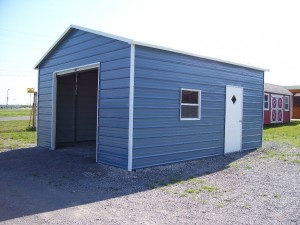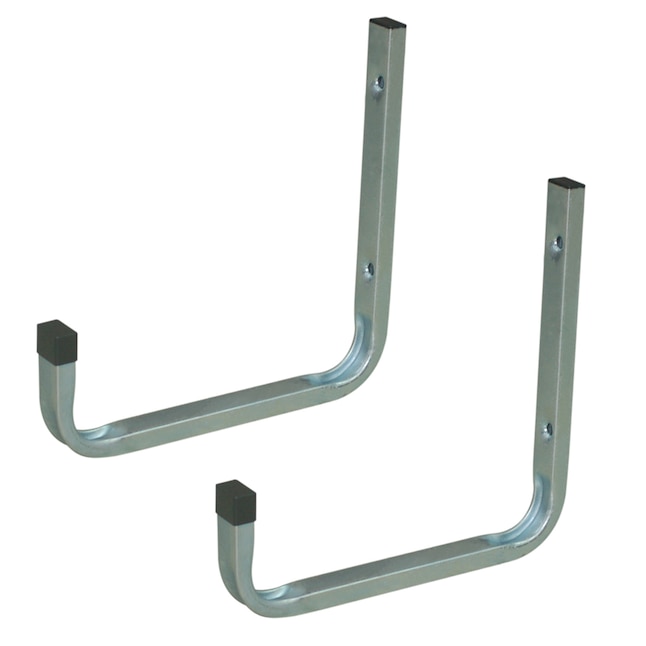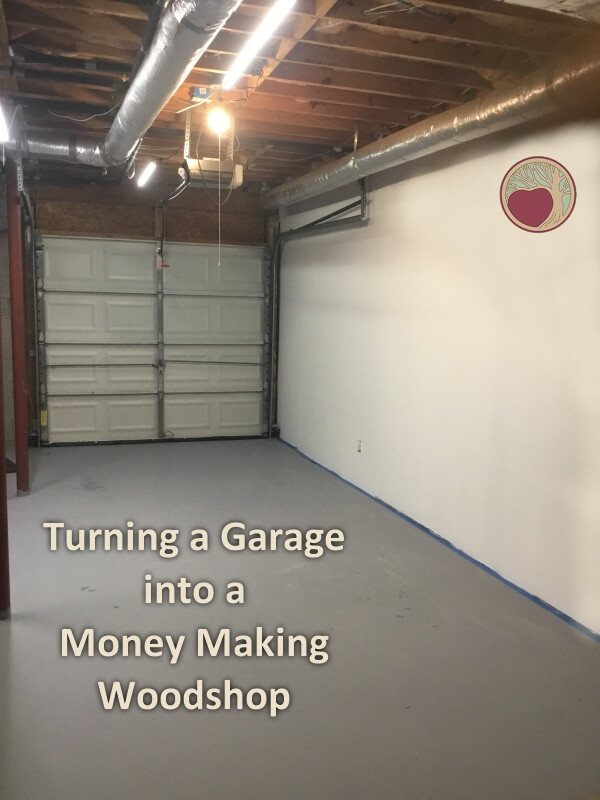
Garage shelving is a great option to maximize the storage space. There are many styles and types of garage shelving available. These include freestanding units that can be easily assembled, as well as mounted shelves that are attached to your garage wall. Each garage shelving style has its advantages as well as drawbacks.
Mounted units can have a greater weight capacity than freestanding units. They are also much easier to transport than mounted shelving. They are not as stable. They can improve mobility but also reduce the maximum weight of the unit.
Mounted units however, are more difficult to install. Mounted units are best for heavy items. Make sure to choose the right shelving system. You can maximize your storage space and still have an attractive appearance with the right shelving.

A great option is wire shelving. It is lightweight enough for easy transport, but sturdy enough to hold heavy items. Many wire shelving systems can even be equipped with wheels. Whether you choose a freestanding or mounted unit, it's important to choose the right materials to protect your investment. Particle board is lightweight and easy to stain.
Another option is metal shelving. Metal shelving is sturdy, and it can be easily cleaned. Some metal shelving units are secured in place with fasteners, but they can also be used as freestanding shelving. All-purpose cleaners can be used to clean metal shelving.
Shelving racks can come in a variety materials such as plastic, steel, or MDF. MDF is often a better option than metal or plastic. Compared to particle board, MDF is a lighter material that is easier to clean. But it isn't as resistant to moisture as metal. Outdoor environments can cause it to deteriorate.
The most important factor to consider when choosing garage shelving is its weight capacity. You should also consider how often you plan to clean your shelving. Depending on what you use your shelving, it may be necessary to clean it more frequently than you might think.

A garage shelving system with good quality should include a workshop and several shelves to store your items. You don't need to build a workshop in your garage. However, it is important to ensure that your tools and equipment are stored safely. It will keep your tools safe and allow you to access them easily when you need them.
The Seville Classics Steel Wire Shelving Unit with Wheels is one of our top picks for garage shelving units. Not only does this model have a 500-pound weight capacity, it is also constructed of steel wire and chrome plating. It is very easy to assemble.
FAQ
What is it worth to tile a bathroom?
If you're going to do it yourself, you might as well go big. A full bathroom remodel is considered an investment. But when considering the long-term value of having a beautiful space for years to come, it makes sense to invest in quality materials and fixtures.
The right tiles can make all the difference in how your space looks and feels. This guide will help you select the right tiles for your project, no matter how small or large.
Decide the type of flooring that you want to install. The most common options are ceramics, stone, porcelain, and natural timber. The next step is to choose a style. The last step is to choose a color scheme.
A large bathroom remodel will require you to match the tile in the room. For example, you might opt for white subway tile in your kitchen or bath and choose darker colors elsewhere.
Next, estimate the scope of work. Do you think it is time to remodel a small powder-room? Do you want to add a walk-in wardrobe to your master bathroom?
After you have determined the scope of work, visit local shops to see samples. This allows you to get a feel and idea for the product as well as its installation.
Online shopping is a great way to save on porcelain tiles and ceramics. Many sellers offer bulk discounts and free shipping.
How long does it take for a bathroom remodel?
It usually takes two weeks to remodel a bathroom. The size of your project will affect the time taken to remodel a bathroom. Smaller jobs, such as adding a shower stall or installing a vanity, can be completed in a day or two. Larger projects such as removing walls, laying tile floors, or installing plumbing fixtures may require several days.
A good rule of thumb is to allow three days per room. You would need 12 days to complete four bathrooms.
What should my cabinets look like?
It all depends on whether you are considering renting out your home or selling it. If you are planning on selling, you might want to take out and refinish the cabinets. This gives buyers the impression that they're brand new and helps them envision their kitchens after moving in.
But if your goal is to rent your house you will need to remove the cabinets. Tenants often complain about having to clean up dishes and fingerprints from previous tenants.
You could also paint the cabinets to give them a fresh look. Just remember to use a high-quality primer and paint. Low-quality primers and paints can crack easily.
How do I know if my house is in need of a renovation?
First, check to see whether your home was updated in recent years. It may be time for a renovation if your home hasn't been updated in a while. You might also consider a remodel if your home is brand new.
A second thing to check is the condition of your house. A renovation may be necessary if your home has holes in its drywall, cracked wallpaper, or missing tiles. However, if your home looks great, then maybe it's time to consider a remodel.
The general condition of your home is another important factor. Does it have a sound structure? Do the rooms look nice? Are the floors clean? These are vital questions to ask when you decide which type of renovation should be done.
What is the cost of remodeling a kitchen or bathroom?
Remodeling a bathroom and kitchen can be costly. But considering how much money you spend on energy bills each month, it might make more sense to invest in upgrading your home.
It is possible to save thousands every year with a simple upgrade. Simple improvements such as insulation of walls and ceilings can lower heating and cooling costs up to 30 percent. Even a modest addition can improve comfort and increase resale value.
It is essential to remember that renovations should be done with durable, easy-to-maintain materials. Materials such as porcelain tile, stainless steel appliances, and solid wood flooring last longer and require fewer repairs than vinyl or laminate countertops.
It is possible to reduce utility costs by replacing older fixtures with more modern models. Low-flow showerheads or faucets can help reduce water usage by up 50 percent. By replacing inefficient lighting with compact fluorescent lamps, you can reduce electricity consumption up to 75%.
What is included in a full kitchen remodel?
A complete kitchen remodel is more than just installing a new sink or faucet. You can also get cabinets, countertops or appliances, as well as flooring and plumbing fixtures.
A full kitchen remodel allows homeowners to update their kitchens without having to do any major construction. This means that no demolition is required, making the project easier for both the homeowner and the contractor.
A kitchen renovation can include a variety of services such as plumbing, HVAC, painting, drywall installation, and electrical. A complete kitchen remodeling project may require multiple contractors depending on the size of the job.
A team of professionals is the best way to ensure that a kitchen remodel runs smoothly. Kitchen remodels often involve many moving parts, and small issues can cause delays. DIY kitchen remodels can be complicated. Make sure you have a plan and a backup plan in case of an emergency.
Statistics
- Following the effects of COVID-19, homeowners spent 48% less on their renovation costs than before the pandemic 1 2 (rocketmortgage.com)
- $320,976Additional home value: $152,996Return on investment: 48%Mid-range average cost: $156,741Additional home value: $85,672Return on investment: (rocketmortgage.com)
- 55%Universal average cost: $38,813Additional home value: $22,475Return on investment: 58%Mid-range average cost: $24,424Additional home value: $14,671Return on investment: (rocketmortgage.com)
- According to a survey of renovations in the top 50 U.S. metro cities by Houzz, people spend $15,000 on average per renovation project. (rocketmortgage.com)
- Attic or basement 10 – 15% (rocketmortgage.com)
External Links
How To
How to Remove Tile Grout on Floor Tiles
Most people are unaware of tile grouting. It seals the joints between tiles. There are many types available today. Each is used for a specific purpose. We'll show you how we can remove grout from floor tiles.
-
Before you can begin the process, ensure that you have all necessary tools. It would be best if you had a grout cutter, a grout scraper, and some rags.
-
You will now need to clean off any dirt and debris that may have been under the tile. Use the grout cutter to cut away at the grout and gently scrape away any loose pieces. Be careful not to damage any of the tiles.
-
Once you have cleaned everything up, take the grout scraper and use it to clean off any remaining grout. If there isn't any grout left, you can go to step 4.
-
Once you've done all of the cleaning, you can move onto the next step. Make sure to take one of the rags out and soak it in water. The rag should be completely dampened. Make sure the rag is completely dry after it has gotten wet.
-
Place the wet cloth on the joint where the tile meets with the wall. You should press the rag down until the grout is separated. Slowly pull down on the rag until it is pulled towards you. Continue pulling it backwards and forwards until all the grout has been removed.
-
Continue with steps 4 through 5, until the grout is completely removed. Rinse the ragout and repeat the process if necessary.
-
When you are done removing grout, clean the tiles using a damp cloth. Let dry thoroughly.